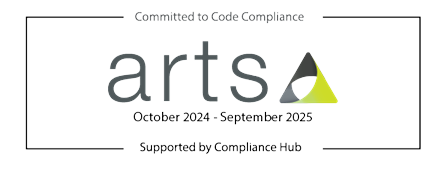Implementing the Hub-model for primary care networks
)
Understanding and overcoming key challenges to integration that exist
PCNs still face many obstacles on their road to becoming fully integrated teams: a resistance to change means taking advantage of opportunities to integrate can be slowed, and a lack of digital infrastructure can leave PCN managers essentially working in the dark when it comes to taking decisions needed to improve access and care across the network.
Every practice is covered by a PCN, but the extent of collaborative working varies
SInce 2019, every practice in England sits within a PCN, and 99% of GP practices have signed up to one of these networks.
However, not every PCN has adopted the same degree of integrated working. While many have taken a truly cross-functional approach, a large number of PCNs continue to see only a loose alignment between the practices in the network.
The extent of engagement with other practices, individual procurement decisions, and even variations in the model of triage, may all differ depending on the specific practice. The lethargy of existing workflows and general resistance to adopting new operational methods can often pose significant challenges to change, limiting PCNs’ ability to integrate further.
Without better information, planning in both the short- and long-term is challenging
The pressures on primary care teams driven by patient demand have continued to rise. The demand for reactive care often presents challenges for primary care teams, many of which aren’t collecting the essential information needed from patients at point of enquiry to appropriately triage their enquiries.
This often means that GPs must deal with a large volume of appointments which may be unnecessary or which could be more cost-effective if handled by a different team member. This presents a significant problem for clinical teams and takes away time that would otherwise be spent on proactive care.
In the long-term, this lack of data creates even larger challenges for PCNs, with staffing decisions often not made on the basis of actual data on demand.
For PCNs, which requires a strategic alignment of objectives and an efficient allocation of resources to cater to the healthcare demands of diverse populations, this lack of information may hinder their ability to do so effectively.
Without effective digital solutions, collaborative working may be limited
A final key obstacle is the lack of alignment around clinical pathways and ways of working between practices within a PCN that may mean opportunities for cross-PCN collaboration are limited – particularly where teams are using different systems or tools for managing patient triage and flow.
Implementing the hub model to integrate primary and community care
For both patients and staff to benefit from the improved access to local care services that PCNs were intended to deliver, it’s essential that services take advantage of opportunities for collaborative working offered by greater integration.
A hub model of triage offers the most straightforward approach to bring together services and streamline patient flow management and collaboration between multidisciplinary teams. Designed to foster integrated primary and community care within PCNs, the hub model centralises triage decisions for patient enquiries across a network, offering clear, consistent care pathways for patients, regardless of at which practice they register their initial enquiry.
Crucially, this model also enables teams to manage follow-up care across the network, and take advantage of all available clinical capacity – including in other practices – to cope with surges in demand.
Digital plays a critical role in enabling effective hub-working for PCNs
In streamlining patient referrals and coordination of care between services, digital tools like Klinik reduces the friction between different providers and ensures rapid collection and sharing of information needed to overcome barriers.
By providing a single digital hub connecting clinicians across a network and which can be accessed by teams regardless of which practice or service they’re based in, Klinik helps PCNs to coordinate patient care and streamline access to a wide range of services across the geographical area.
With AI-assisted patient-history taking providing triage teams with the information needed to make rapid, accurate care decisions, Klinik makes triage and patient flow management more efficient. With all enquiries triaged in a single system, Klinik ensures equitable access to care for patients across the network.
Thanks to the insights contained within the dashboard, PCN managers also have greater oversight of demand and capacity across the network, both at the current time and over a period of months. As a result, they are better able to make decisions on the staffing and resources necessary to ensure patient access within current funding – while also being able to create space for proactive care, too.
The transition toward integrated neighbourhood teams reflects wider pushes toward more sustainable, integrated models of care taking place across healthcare in England.
The hub model of triage is central to enabling true PCN ways of working by helping networks overcome traditional barriers to integration. By embracing these technological innovations, PCNs can enhance service delivery, ensuring patients receive timely, coordinated care.
If you’d like to discuss how Klinik could help your PCN to benefit from a hub-model approach to triage, get in touch with our team to find out more.



